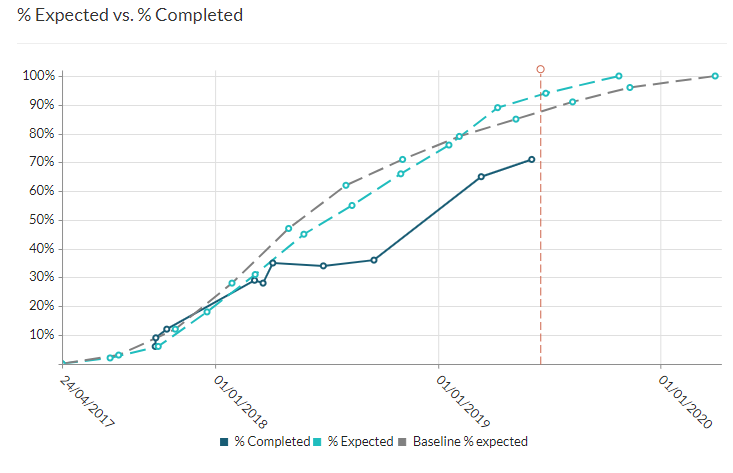Expected progress of summary tasks and projects
The expected progress calculation is made assuming that, up until present time, all tasks are completed in the same percentage as time has elapsed since its inception. On that basis, the expected percentage will calculate the progress of summary tasks and projects in the same way that it is done with the calculated progress.
For example, if a task lasts 10 days and today’s date is on the seventh day, the system will take a 60% expected progress for that task (6 days elapsed/10 days total).
Once all tasks have been calculated, the expected percentage for summary tasks and for projects will accumulate, resulting in the expected % of both.
ITM Platform will take into account the default calendar and weekends for calculating expected progress, just as they are used in the calculation of tasks duration.
Expected progress of the baseline
If you have an active baseline, the expected progress will be calculated for both the ongoing planning and baseline, counterposing both the project tracking curve.

How reliable is the expected progress?
The calculation is a temporary projection and therefore does not necessarily represent the expected real progress of the project, unless the actual progress of the tasks is proportional to the time.
In other words, real productivity is not necessarily linked to the elapsed time. The project or task manager reports on the actual progress and not on the progress of time. This may be reason why the expected % may differ from what has been done.
Example: You have a task to lay bricks for 10 days, however, more bricks are stacked in the first couple days than the last. The Task Manager is aware of this and at the end of the third day reports a progress of 40% (there are 40% of the bricks). However, the expected progress will not reflect reality, because the calculation is 30% (3 days elapsed/10 days total)
